The Internet and the Reform of American Politics in 2021
Introduction: Biden’s Situation
A President Biden will face problems larger in scale and scope than any previously presented to the United States. There is no telling whether COVID-19 will still be plaguing the land, or even how many millions will need productive work when he takes office. These conjoined crises, the “pandemiconomy,” now seem monumentally daunting.
Yet they may succumb to easier solutions than the long list of secular challenges that threaten the Republic:
- economic inequality,
- immigration,
- infrastructure,
- national security,
- democracy,
- systemic racism,
- rising China, and
- the biggest of all — rapidly accelerating climate change.
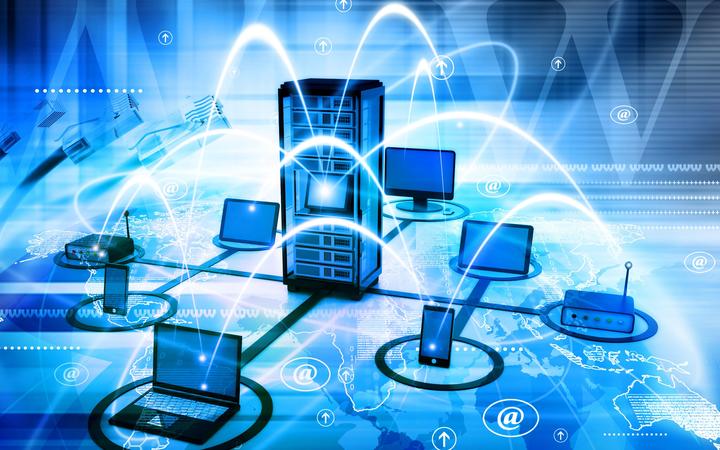
To tackle these problems, the next Administration and Congress will make significant changes in the rule of law. It should enact most of the legislation passed by the House but ignored, so far, by the Senate. Then pages of distorted regulations have to be rewritten, and counterproductive Executive Orders must be superseded or withdrawn.
But even the most sweeping and electric change in law, regulation and executive action will not alone give Joe Biden a successful presidency. He needs to mobilize all the other sectors of American society — business, non-profits, civic/religious groups, investors, state/local government leaders, education and health officials, the media – to restore confidence in, and a commitment to, the fundamental beliefs and values of America, and the institutions that embody and enable them. Candidate Biden talks about this as “the soul of America.”
In the mid-90s, Newt Gingrich observed that “being an American” was different from being a citizen of any other country. Why? Because unlike those identities, often based on ethnic, religious, linguistic, racial or similar identity, anyone could be an American if they believed and lived the basic tenets of the American way – freedom, tolerance, hard work, commitment to the Rule of Law, etc. You could be an American, if you had an American soul.
The “culture wars” manifested in policy arguments show a dynamic and sometimes contentious process, but there IS a soul of America. However defined from time to time, it’s centered on notions of fairness and equal opportunity; acceptance of unequal outcomes (esp. via innovation or hard work); reason/rationality; freedom of speech and religion; rule of law / the Constitution; and others. There is an entire constellation of American values and institutions to consider. It’s not important that we define it crisply now. We know it when we see it. We know it’s in jeopardy now. And we know the success of the Biden presidency will be based on first salving that soul and then using that restored civic confidence to mobilize ALL the elements of America’s capacity to address its problems to make significant progress on the serious problems listed above.
Government alone lacks the power to fix what ails the United States. Unlike in China or other autocracies the US can only meet major challenges when it acts in concert with private enterprise and other sectors of society. Government is necessary, but not sufficient. It can establish effective regulations and wise incentives that unleash massive private sector innovation and investment. It can seed-fund basic R&D or public-private partnerships that are both nimble and coordinated. It can use legitimacy and moral suasion to influence private choices (like wearing masks) which are essentially unenforceable.
It is my thesis that, in our lifetimes, the way that the federal government managed information technologies shows most dramatically how it has both benefited from policies reflecting the American soul and how it has, in turn, promoted those values in the world. I’d like to review the past 30 years of how federal policies have both enabled information tech and advanced our interests, how the Trump administration has interrupted and retarded that advancement, and how the Biden administration can embrace wise policy, coupled with helping heal the American soul, and use IT to address the major problems listed above.
The United States needs shared, productive enterprise. After their unlikely victory over the Persians (479 B.C.E.), the Greeks engaged in a monumental shared building project. St. Paul’s in Rome marks the reform of the Catholic Church in response to the challenge of Protestantism. Construction projects put Americans to work and unified the country in Franklin Roosevelt’s New Deal, as did the Interstate highway system, the Apollo program, the early Internet and other grand projects. Building things is what America needs to get back to doing, according to venture capitaliarc Andreessen.
In the Biden Administration, the United States should overhaul coast-to-coast the six major platforms of a modern society:
- clean power,
- transportation,
- water and sewage,
- communications,
- health, and
- education.
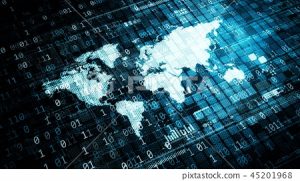 The advancement of each platform depends upon a fusion with distributed computing, defined below. Each overhaul will increase the standard of living for everyone while leading the way to productive, full employment. Each is the “moonshot” that Joe Biden wanted, but did not get, in the 2009 stimulus package that led to a disappointingly attenuated recovery from the Great Recession.
The advancement of each platform depends upon a fusion with distributed computing, defined below. Each overhaul will increase the standard of living for everyone while leading the way to productive, full employment. Each is the “moonshot” that Joe Biden wanted, but did not get, in the 2009 stimulus package that led to a disappointingly attenuated recovery from the Great Recession.
Since the 1990s the key to success for government has been alignment of public goals with the technology trends of the decade.
- Digital cellular and dial-up Internet gave Bill Clinton a budget surplus and a stock market boom.
- Mistakenly believing that power came from the barrel of a gun instead of the screen of a laptop left the Bush Administration with the historical legacy of two unwon wars and the Great Recession.
- The smartphone and the cloud created for Barack Obama the potential, achieved only in part, to deliver health care, education, and widespread productivity gains.
For Joe Biden, in the 2020s three trends in infotech are coming together to produce change beyond the possibilities even of the last three momentous decades.
- IOT. The Internet of Things (IOT) will measure most of the observable world.
- 5G. Network innovations of the fifth generation of digital cellular (5G) enable all that data to be collected at tens of thousands of distributed computing centers and hundreds of centralized locations, generally known as the “cloud.”
- AI. When applied to this data, the algorithms called artificial intelligence (AI) will enable staggering advances in health care, the standard of living, clean power, transportation, education, and national security.
Taken together, IOT, 5G and AI compose distributed computing. This can be thought of as a massively souped-up combination of the smart phone and the cloud, or, more prosaically, a computer network in a box installed in every major feature of the social landscape, whether a hospital, school, or town hall.
Let us survey how the Clinton, Bush, and Obama Administrations used or failed to use infotech in their strategies for governing. Then we examine the radically different direction taken by the Trump Administration. From this review of recent history, we can see what options are presented to a President Joe Biden for aligning his goals with the capabilities of infotech in the search for solutions to the country’s monumental problems…and for a legacy presidency that will reform the American culture.
Part One: Information Technology-Government Strategy 1992-2016
The Clinton Post-Cold War Campaign for Democracy
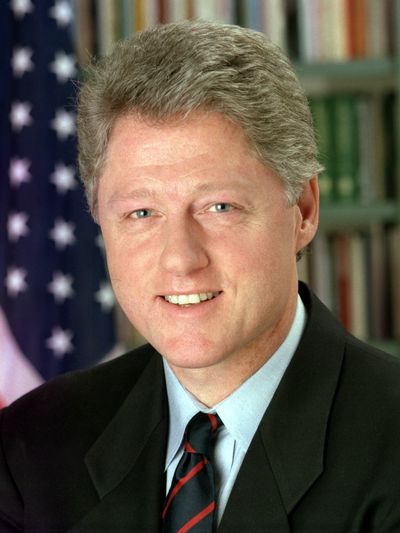 The Clinton government justly celebrated the tax increase and spending cuts of the Omnibus Budget Reconciliation Act of November 1993 as the foundation of the fiscal success that marked that Administration and arguably stimulated the increase in income across every income quintile, an accomplishment that had not occurred since the 1960s and has not re-occurred since then. However, the strategic move of genius was to use the convergence of computing and communications. The expression of that convergence was the Internet.
The Clinton government justly celebrated the tax increase and spending cuts of the Omnibus Budget Reconciliation Act of November 1993 as the foundation of the fiscal success that marked that Administration and arguably stimulated the increase in income across every income quintile, an accomplishment that had not occurred since the 1960s and has not re-occurred since then. However, the strategic move of genius was to use the convergence of computing and communications. The expression of that convergence was the Internet.
This phenomenon had everything the Clinton Administration could want. It empowered individuals to maximize their free speech and freedom of assembly, at least virtually. Its code gave everyone an address that was a vote for participating in a first draft of a global democracy. It dispensed with government control and drew private investment from all over the world. It was, in short, the avatar of democratic capitalism.
To push the Internet on the world was the same as selling the globe on the American culture, and if they were nothing else (although they were a lot else), Bill Clinton and Al Gore were visionary salespersons. To pursue this strategy, the Clinton Administration consciously aligned its diplomatic and domestic agenda with the interests of the leading infotech firms.
Intel would become the world’s largest semiconductor firm, Microsoft, the biggest software company.[Note 1] In a few words covered by the smoke of the 1993 budget battle over the top income tax rates, Congress empowered the Federal Communications Commission to create the digital cellular industry pretty much the way it chose. In a propitious coincidence, a few technological breakthroughs created the potential for easy consumer use of the Internet, an arcane network previously confined to academics, computer hobbyists and some uniformed folk deep in the national security space.
To help the Internet spread first and fastest in the United States, the FCC gave it the use of the landline telephone network for free. This “borrowing” enabled the Internet to break IBM’s market power in computing and Japan’s dominance of electronics in the 1980s. With a little help from the friend of government, the Internet spread more rapidly in the United States than in any other country. By 1995 both digital cellular and the Internet appeared to all the world as American phenomena. Resistance was futile.
The FCC decided that both digital cellular and the Internet should wrap the world in two common mediums, one for communications and the other for connected computing. It created a half-dozen American digital cellular companies and set them to race against each other for market share.[Note 2] It gave the new companies especially low prices for connecting to the existing landline network. When the gun went off, the cellular horses raced to grab subscribers faster than any communications medium had ever done.
Fanning out from the United States to innumerable global destinations, squads of government and private sector advocates pursued technical standard-setting in international bodies. These included as the International Telecommunications Union (ITU), the Third Generation Partnership Project (3GPP), the Internet Engineering Task Force (IETF) and the Institute of Electrical and Electronics Engineers (IEEE). The ITU, like the United Nations, makes its decisions by votes from every country. The American victory in the Cold War, however, left no rival nation to suit up rival engineers. Besides, the Internet stock market bubble was creating trillions of dollars of wealth (and even balancing the federal budget for the first time in decades). Other nations wanted a piece of that action
The Western engineers in the IEEE and IETF were animated by a libertarian impulse that evinced little interest in, and a dollop of hippie aversion to, state authority. However, the United States government accepted them as standards setters. Surprised to be welcomed into an unsought but real partnership with government, they drove the IEEE reasonably quickly toward results that suited American firms.
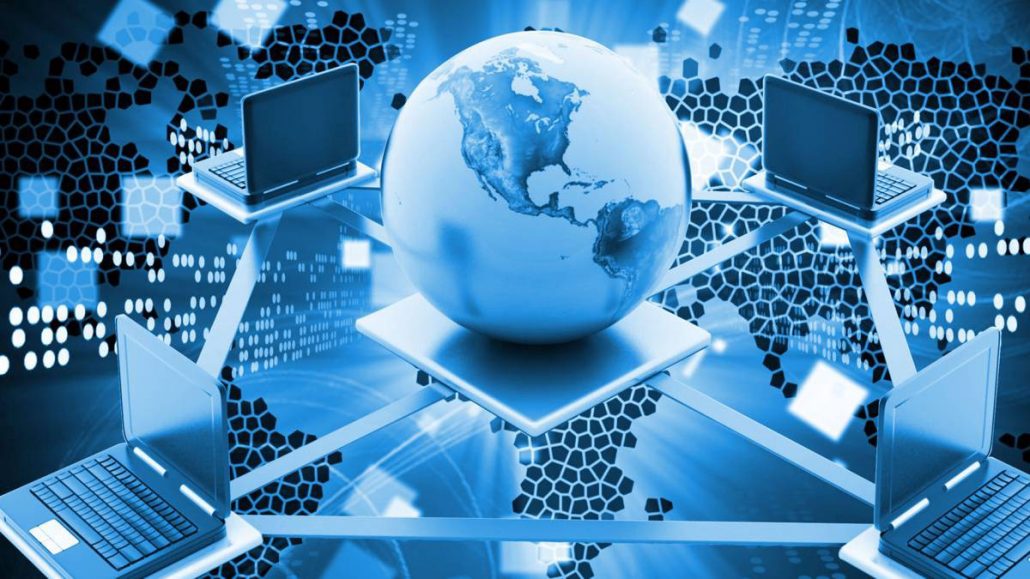
All business, like all forms of organized action, has an ideology. Infotech was uniquely suited to democratic capitalism: individual freedom and wealth creation went hand-in-hand. As colorfully expressed in John Perry Barlow’s Declaration of the Independence of Cyberspace, the infotech leaders believed they were creating a digital domain for human action. No one needed a passport to go there. Just log on through a computer and everything, or at least an awful lot, was free. It was Woodstock 1969 all over again, and music was only a slice of the cornucopia of content.
To flourish, infotech firms needed market access. The United States Trade Representative Charlene Barshefsky negotiated in the Information Technology Agreement of 1996, an elimination of tariffs on anything connected to or used by the Internet.[Note 3] This was the most successful trade agreement by value in history. It also opened the door to rapid diffusion of largely American technology around the world.
To promote infotech domestically, the Telecommunications Act of 1996 promised de-regulation in communications. The protections of the First Amendment did not suffice: Section 230 immunized firms from litigation for whatever they might post, transmit, or fail to edit. Nothing bad could happen if the power to communicate were vested fully in the people. No new intermediary would take the place of big media firms or government. It was a heady but naïve time.
The United States made the Internet a tool of diplomacy. It used infotech to cement and exploit its victory over communism, both in the developing world and behind the vanished iron and bamboo curtains. For any country, diplomacy always rests on the three pillars of military strength[Note 4] , economic significance, and the complex of treaties, statutes, standards, and regulation that we can collectively call law. These three durable columns supported the democratic capitalist ideology of the Internet.
In the salad days of the Internet, American diplomats had little difficulty in selling it abroad. Presenting it to foreign governments had the specific purpose of saying “Sesame, open yourself”[Note 5]. If other nation states got out of the way, in the Internet would come, disrupting the societal and business status quo in a way Americans considered certainly favorable to their businesses and way of life.
The United States obtained the agreement of more than 60 nations to regulate infotech in much the same way as the American model and to let the fiber optic cables carrying the Internet snake across their borders. Meanwhile, by controlling the addresses of websites in a way that exercised little control at all, the United States imposed a free-for-all devil-take-the-hindmost frame around the swelling network.
The Internet built a virtual pathway for American investment in most countries. No one knew exactly where it came from and almost everyone wanted a piece of its action. For companies in other countries that meant buying infotech goods and services priced in dollars. This gave foreign governments still another reason to treat the buck as the world’s currency. How could Intel object to be paid in dollars by Chinese firms? Moreover, American businesses could borrow in strong dollars and invest at comparatively cheap prices overseas.[Note 6] The American government could easily afford to maintain the world’s largest military, notwithstanding the evaporation of the Soviet military threat. It followed that the United States would police the planet, and other countries had little reason to object. Looking back, these were halcyon days, requiring an occasional pinch to determine if it was all really real.
The Clinton Administration strategy included a coherent plan for China. The country had been rapidly growing since in the 1970s it made the oxymoron of state-directed capitalism a workable method of improving the standard of living. In brief, through the 1980s and 1990s China brought hundreds of millions of its people, mostly male, from the country to cities where their low wage manufacturing work drove staggering exports into the developed world. With astonishing rapidity China became the number one country for making shoes, socks, and cell phones.
To fuel its boom, China ignored the Western rule of law[Note 7], especially intellectual property. The country adopted Intel’s well-known “copy exactly” rule building its fabrication plants around the world but applied it to Western software. Microsoft had a nearly 100 percent market share in enterprise software in China but obtained almost no revenue from the position. The Clinton plan, brilliantly conceived and executed by Ambassador Barshefsky, was to admit China to the World Trade Organization on conditions that would require China to adopt the Western rule of law. The United States, of course, would have to insist on enforcing those conditions after the admission, which occurred in 2001.
This strategy was sailing until it hit the reefs of the 2000 election and the 9/11 attack.
The Bush Administration Focused on War
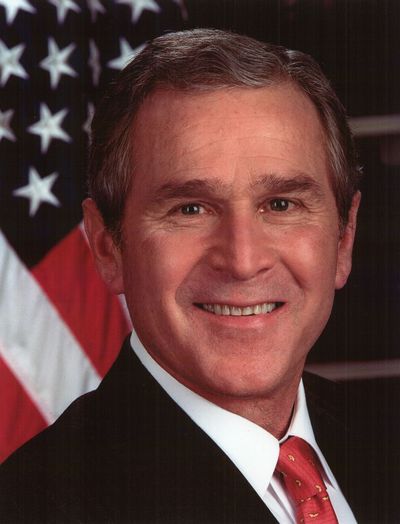 Apparently surprised and definitely unprepared to be the president, Bush and his incoming team showed little interest in the information technology strategy they inherited from Clinton. Its public-private composition was repugnant to the anti-government Republicans. Its technical subtleties lacked the simplicity the new president preferred for what Saturday Night Live mocked as his “strategery.” Most consequentially, the critical job of enforcing the WTO conditions against China was largely ignored.
Apparently surprised and definitely unprepared to be the president, Bush and his incoming team showed little interest in the information technology strategy they inherited from Clinton. Its public-private composition was repugnant to the anti-government Republicans. Its technical subtleties lacked the simplicity the new president preferred for what Saturday Night Live mocked as his “strategery.” Most consequentially, the critical job of enforcing the WTO conditions against China was largely ignored.
Bush’s FCC revived the old school conservative tradition of alignment with the established telephone companies. As a result, the Internet needed a new physical medium to connect to households. Fortunately, cable was available. Those firms shut down some of their unwatched channels and converted the space on the coaxial connection to broadband. In combination with Wi-Fi[Note 8], the new communications technology allowed Intel to introduce the laptop in 2003. The Internet no longer needed the poky copper telephone line to connect to computers.
The old landline telephone companies dedicated themselves to becoming digital cellular titans (one of the most remarkable business transformations in history). With AT&T (the name had been purchased by the former Southwestern Bell) they welcomed Steve Jobs’ handheld computer on to their networks when he introduced the iPhone in 2007. Digital cellular and computing sat together in the palm of the hand. Soon after, the Google-created Android system for cell phones sealed the deal. Broadband, Wi-Fi, and laptops were no longer cool; smartphones and digital cellular connections were.
American firms had fused digital cellular and the Internet. This permitted all content to go directly from creator to consumers in every country. (What did it matter that Apple and Android let China make all the phones?) Social networks arose on this new convergence of communications and computing.
However, since September 11, 2001, the Bush Administration had not much cared for using information technology to advance American interests in other countries. It preferred war instead. Democracy would grow out of the barrel of a gun, not the screen of a laptop or smartphone.
While the Bush Administration never stopped thinking about oil and Muslims, China ramped up its copying machine, insouciantly ripping the intellectual property off any laptop a Western businessperson might schlepp into the Middle Kingdom. The Bush Administration paid little attention to enforcing World Trade Organization strictures on China. Soon China Inc. composed a fourth of global demand for chips and phones. It had an even bigger share of end user products like personal computers and Internet services like on-line payments.
Beijing must have remembered how Europe had drugged the Chinese with opium in return for tea and seized prime property in Shanghai to create a free trade zone for Western firms. Hong Kong, a junk ride from the mainland, was a beckoning outpost of unfettered capitalism, and Taiwan, of course, had become a burgeoning base for global electronics. The past and present taught the Chinese Communist Party to copy capitalism for the purpose of growth, but that the West would take the profits from China’s enormous domestic market home to New York, London or Paris. Beijing therefore walled off its own domestic market from Western access to the degree possible. To emulate the American Internet boom, it created mirror images of the successful American infotech companies: Baidu was Google, JD was Amazon, Lenovo was Hewlett-Packard. Only Intel and Apple retained a presence in China as significant as their role in the American economy, and that was only because they sold tangible objects too difficult to imitate or tap into.
In November 2008, the American people turned to Barack Obama for leadership. The Bush Administration had plunged the country into two economically wasteful, militarily inconclusive wars and failed to avert the worst economic downturn since the Great Depression. The Democrats won not only the presidency but large majorities in the Senate and House. Despite Obama’s inspiring theme of “hope and change,” the Republicans in Congress vowed to oppose everything he wanted to do. Compromise was ruled out. The country harbored two cultures, and for the entirety of the Obama Presidency unity was not achieved on any topic.
The Obama Administration Revived Infotech Strategy
Coming into office, the Obama Administration had no choice but to focus on recapitalizing Western banking and increasing employment. It selected health care as its top priority for legislatively driven reform. The runner-up, energy, never got a vote on the Senate floor. Information technology was the sector of the economy that didn’t seem broken, didn’t need fixing.
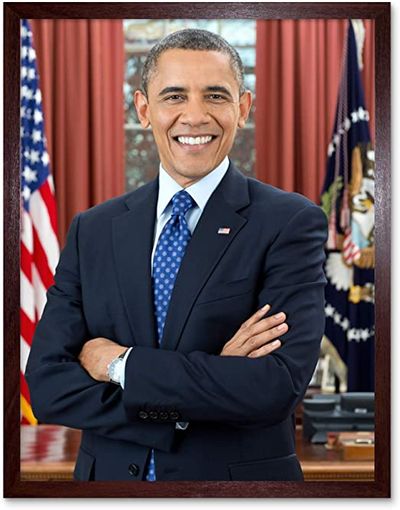 Not only did infotech not require bail-out or stimulus. Its leading firms were, using hardware and software to create massive user-generated content and voluntarily connected social networks. Facebook and Twitter seemed the full flowering of the 1990s vision of individual humans spontaneously self-organizing to learn, entertain, and govern themselves.
Not only did infotech not require bail-out or stimulus. Its leading firms were, using hardware and software to create massive user-generated content and voluntarily connected social networks. Facebook and Twitter seemed the full flowering of the 1990s vision of individual humans spontaneously self-organizing to learn, entertain, and govern themselves.
As proof of their value, social networks could overthrow tyrants. In Iran (2009), Tunisia (2010), and Egypt (2011), Twitter enabled large masses of people to organize protests against autocratic rulers. In 2010 Secretary of State Hillary Clinton explicated the new policy in a trio of speeches about Internet freedom. Building on the Clinton Administration’s policies, she tried to link infotech to the web of beliefs and values that compose the idealized American culture of liberty, free speech, and popular sovereignty.
Words were not enough. China banned Twitter, Facebook, and Google in 2009. In the Middle East, the Arab Spring, as the era of protest was called, had turned to winter by 2012. Violence returned as the means of seeking and holding control. The conflict roster included the Syrian Civil War, the rise of ISIL (or ISIS), continued insurgency in Iraq, a coup in Egypt, the Libyan Civil War (including the ambassador’s death in Benghazi that Trump used to harass Clinton in the 2016 presidential campaign), and war in Yemen.
It turned out that in these cases social networks needed a strong government ally if they were to promote democracy as a mode of government. The Western states were not up for that role. They let the autocrats back in power. Meanwhile, the failed uprisings taught tyrants that infotech provided weapons more insidious and fast-acting than guns. Russia and China developed centers capable of cybersecurity attacks on Western firms. Retailers and banks found that half or more of their incoming messages were fraudulent. Sabotaging the antedated electoral system of the United States was all too easy, as shown in the 2016 election. Twitter and Facebook, ironically, did more to destroy democracy in their home country than they did to advance it elsewhere.
The Twitter revolutions also taught the Chinese Communist Party that infotech could influence the thoughts and behavior of large groups of people who did not otherwise know each other. As a result, Beijing agreed with its infotech firms that they would help the Party shape the country’s culture to accord with the Party’s continuing control. The ancient Chinese proverb had it that “the mountains are high and the Emperor is far away.” The smart phone and Internet, however, gave the Communist Party all-seeing power. In return for their cooperation, the Party let the infotech entrepreneurs become fantastically wealthy, like the American tech titans they had copy-catted.
China Inc. then comprised capable infotech firms, an autocratic government, and export-led manufacturing. In part because Beijing tripled the size of the American stimulus (adjusted for the relative size of the two economies) after the 2008 financial crisis, China sailed through the downturn that the West coped with less well for a decade. China then became the world’s largest foreign investor, taking over the number one spot held by the United States since the end of the Second World War. It continued, meanwhile, to pay scant attention to the Western rule of law and scoffed at its WTO obligations.
In response, the Obama Administration proposed to bind a dozen Pacific Rim economies into a single trading block that excluded China. The idea was to make China an offer it could not refuse. To trade with its most important target countries it would have to accept the Western conditions that started with the unfulfilled conditions of WTO entry. Among other things, these requirements would establish once again an American-like governance of the Internet. However, in large part because of the attenuated domestic recovery, the Obama Administration set down this road too late. In any event, the Republican opposition to all things Obama, no matter how harmful that obdurate attitude was to Americans and American business, meant the party would not play its traditional role of support for trade agreements. Because of its base in labor, the Democrats were never reliable supporters of free trade. The Trans-Pacific Partnership treaty was never approved by Congress.
As a complement to the team play tactic, the United States also delegated the Internet naming function to a consortium of multiple stakeholders. Since 1997 it had kept a government hand on the Internet tiller. By 2016 it gave up that role, and invested in a non-government group of experts and interested parties control of the Internet Corporation for Assigned Names and Numbers (ICANN). ICANN manages the unique addresses that allow computers all over the world to find each other. ICANN establishes mechanisms for resolving disputes over the rights to domain names, preventing cyberfraud, and advising internet governance policies. The core tenets of ICANN’s governance are:
• bottom up (“members of sub-groups in ICANN can raise issues at the grassroots level” which then rise through various committees before being presented to the Board as a policy recommendation),
• consensus-driven (decision-making resists single-interest capture because the forum allows for participation from people who represent the broad range of perspectives), and
• multistakeholder (the public and private sector and technical experts are all invited to the discussion and considered equally).[Note 9]
These principles indirectly, but clearly, challenged Beijing’s state control of the Internet. The relinquishment of Internet governance to multiple stakeholders did not deter China though. It continued to advocate for regional or nation-state control of the medium.
On the domestic front, the Obama Administration’s embrace of infotech led it to favor the interests of firms creating or using content as against internet service providers. The ISPs were utilities, like power lines. Netflix, Twitter, Facebook, and others provided the value-creating composite of video, text, games, e-commerce now seen as the manifestation of the Internet.
Expressing its preference for these infotech content firms, the Administration carried the flag of “net neutrality.” The Federal Communications Commission struggled to translate this concept into regulation, but the gist was that the government could constrain how the conduit firms, like cable and mobile phone companies, treated the content companies. Naturally, the internet service providers (the conduits) objected, since the government did not propose to govern the content companies in any way at all. This was not an even-handed approach. Republicans in Congress and the conservative judiciary gave the FCC no end of trouble for this one-sidedness, notwithstanding the fact that it was rooted in the notion that content on the Internet was the full digital flowering of the First Amendment.
At the same time, the Obama Administration could not cure the blindness of infotech concerning privacy or security. The social network firms profited from the aggressive elimination of privacy. Almost all firms accepted security breaches as a cost of doing business, just like the automobile industry tolerated a horrific death rate until the reforms kicked off by Ralph Nader’s “Unsafe at Any Speed” (1965). Corresponding books for cybersecurity have been written, but as yet without the same popular or legislative reaction. The Obama Administration in retrospect should have gotten more quid for the quo of its boost to the content and social networking firms.
On both domestic and international fronts, the Administration saw the necessity of allying with infotech, but it did not achieve its strategic goals. In 2016 frustration turned into tragic remorse. Donald Trump used infotech to gain huge audiences. He also sidestepped via Twitter, Facebook and Fox all rational intermediation. His illogical, inaccurate, intemperate messages hit squarely their target voters in the swing states bizarrely determinative of the choice of president. The audience bought Trump’s politicization of race and class division, an election strategy perfectly aligned with Facebook’s business model of monetizing fallacies and divisiveness.
The single worst person Obama could imagine as his successor –a person who tried to de-legitimize Obama’s achievement of becoming the first black president by concocting the perfidious claim that this Hawaiian was actually born in Kenya, hence barred by the Constitution from the office that he twice won election to –took his place in the Oval Office. We need not discuss how Donald Trump’s conception of the role diverged from Barack Obama’s. Soon everything harmful to the American culture that infotech could do was being done, under the aegis and with the active participation of the new president.
Part Two: Information Technology-Government Strategy, 2016-2020s
Trump Reversed, Twisted Infotech Policy
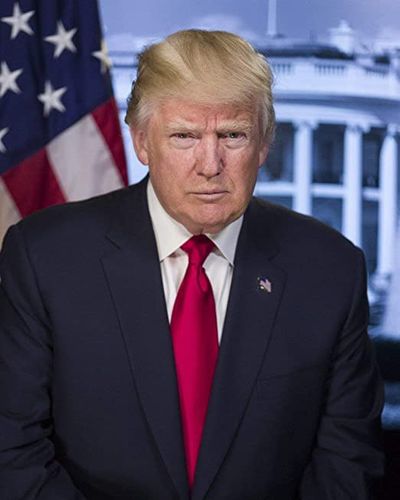 At least from 2015 to 2019, Donald Trump used infotech for political purposes more successfully, and ruthlessly, than any politician in the world. He had a one-two punch of Fox’s broadcast and cable channels, coupled with Twitter and Facebook,[Note 10] — the old and the new media. He used this combination to knock reasonable candidates out of the nomination contest and compel the Republicans in Congress to support his every action, no matter how feckless or foolish. Perhaps a pandemic and the clueless response thereto has broken the spell cast by Trump over his party and his people. However, from its first day the Trump Administration reversed the infotech policies of the previous decades.
At least from 2015 to 2019, Donald Trump used infotech for political purposes more successfully, and ruthlessly, than any politician in the world. He had a one-two punch of Fox’s broadcast and cable channels, coupled with Twitter and Facebook,[Note 10] — the old and the new media. He used this combination to knock reasonable candidates out of the nomination contest and compel the Republicans in Congress to support his every action, no matter how feckless or foolish. Perhaps a pandemic and the clueless response thereto has broken the spell cast by Trump over his party and his people. However, from its first day the Trump Administration reversed the infotech policies of the previous decades.
This president asserts that he is a nationalist, but so were all his predecessors. The difference is that Trump wants an autarkic economy. Ever since David Ricardo this has been understood to hurt the average standard of living of the country that tries to separate itself from the rest of the world economy. Ricardo’s overzealous fans, the neoliberal economists who have managed Democratic Party policy since the 1990s, failed to figure out how to allocate gains equitably without contradicting their trust in markets. But regardless of distribution issues, to which it was mostly indifferent, isolationism was bad medicine for infotech. For one thing, isolationism encourages European governments to fight back against the American firms’ victory over rivals on that continent. It disrupts the global supply chains that have lowered the cost of production for all infotech goods and services. Worst of all, Trump’s strategy has strengthened Xi’s push for China to exclude American infotech firms. No American infotech company has improved its own competitive position vis a vis Chinese rivals due to Trump. Gains to stock prices have been realized principally because the Republicans slashed corporate income taxes, but Trump has hurt the long run prospects for American exporters.
The Trump strategy threatens to undo America’s success in making the Internet and digital mobile into common global media. In recent years China has been arguing at the International Telecommunications Union, the international regulator of spectrum use, which it now chairs, that the imperatives of the future, such as three-dimensional images sprung from a computer screen, require radical changes in the software that makes the Internet a global medium. China is trying to get other countries to use of the Internet to control the beliefs and actions of their people. There are indications that this autocratic model is being adopted by India.
In parallel China sends armies of engineers to the IEEE, an international forum for standard-setting, to argue for China’s preferred solutions to technical problems. This is a page out of America’s book from the 1990s. These engineering debates are to government diplomacy what bare knuckle boxing is to badminton. Each are played to win, but not the same way. The theme across all international organizations is that China wants to shatter the global medium of the Internet into regional and national pieces.
Instead of opposing China on this front, Trump has threatened American Internet firms with punishment if they interfere with his use of the medium. At the same time, it is reported that Trump supported Xi’s construction of concentration camps for the persecuted Muslim minority that the Party uses infotech to identify. Autocrats support each other’s coercive use of infotech.
Adhering to isolationism, the Administration has engaged in diplomatic warfare against China’s most important technology equipment manufacturer, Huawei. That firm is especially closely tied to the People’s Liberation Army and the Communist Party. It is a stand-out in the ranks of Chinese lawlessness in terms of intellectual property. Its equipment may well contain spying apparatus. It makes for a ripe target for American hostility, even if singling out a single firm is only a patch on what should be a holistic China strategy.
Trump’s State Department has badgered European governments not to let their communications firms buy equipment from Huawei. Only Boris Johnson has gone along. The Trump Administration has also banned American firms from selling profitable infotech products to Huawei. In reaction, Huawei and its government are ramping up investment in Chinese silicon manufacturing and supporting suppliers in Korea and other Asian countries. The Trump Administration is in its uniquely unwitting way creating an Asian trading block for 5G with China at its center and the United States excluded.
The central element to competing with China strategy is that American firms have to provide superior, or at least competitive products. The government should have issued a request for bids to build a semiconductor fabrication plant, and barred firms from bidding unless their countries of origin participated in a trade agreement that provided adequate safeguards against any foreign government’s infiltration into the products or management of the bidders.
Bizarrely, the Administration has furthered strengthened Asian rivals to American interests by promising federal funds for the Taiwanese Semiconductor Manufacturing Company to manufacture in Arizona, where it could poach employees from the most important semiconductor firm in the history of the United States, Intel. It is beyond unusual for any Administration, and especially a self-proclaimed nationalist government, to dedicate public money for a foreign firm to undercut American interests. Although infotech has received nothing but short-term benefits from cooperating with, or in some cases appeasing the Trump Administration, the long-term harm to the sector has been immeasurable.
Most distressing of all has been Trump’s decision to use infotech not to promote democracy abroad but instead to undermine it at home.[Note 11] In his hands, Facebook, Twitter and others destroyed reasoned discussion, common perceptions of reality, and consensus-building on any issue in America society. This has been a page out of the Chinese Communist Party handbook. As a result, reasonable people wonder if this industry, like nuclear weapons or tobacco or coal, creates risks that vastly outweigh rewards. Some ask if the goal of infotech policy in a Biden Administration should be to diminish infotech’s power. However, without using infotech to create goods and services, and to reform the American culture, a Biden President is not likely to be a success.
What should Joe Biden do?
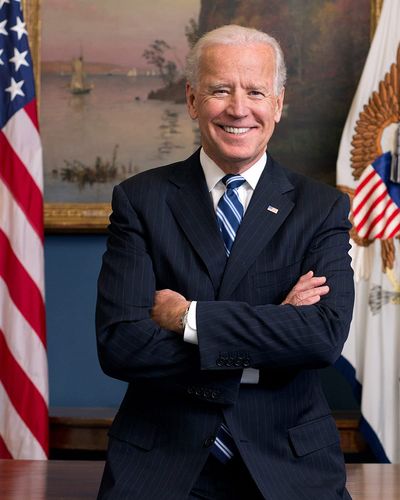 The pandemic has revealed, dramatically and tragically, the need for new institutions and the imperative of an alliance between government and infotech. Throughout 2020, the bipartisan efforts of Congress lacked adequate means to deliver solutions for healthcare or unemployment. Much was done, but the United States irrevocably owns the sad record of worst-performing rich country. Among other might-have-been’s, the federal government should have lodged the effort to create testing and tracing, therapy and vaccine development, and distribution management in a nonprofit governed by a nonpartisan board of scientists, provided it $100 billion, and promised to translate its directions into law and regulation. The country urgently needs non-political, rational collaboration across the domains of science, business, and political leadership.
The pandemic has revealed, dramatically and tragically, the need for new institutions and the imperative of an alliance between government and infotech. Throughout 2020, the bipartisan efforts of Congress lacked adequate means to deliver solutions for healthcare or unemployment. Much was done, but the United States irrevocably owns the sad record of worst-performing rich country. Among other might-have-been’s, the federal government should have lodged the effort to create testing and tracing, therapy and vaccine development, and distribution management in a nonprofit governed by a nonpartisan board of scientists, provided it $100 billion, and promised to translate its directions into law and regulation. The country urgently needs non-political, rational collaboration across the domains of science, business, and political leadership.
As soon as the election is over, Congress should return for a post-election rump session to take this action by veto-proof majorities. New institutions outside government, new systems within government, and a new willingness to collaborate across multiple disciplines are how the country can meet all its many, daunting challenges.[Note 12]
Nonprofits can be used also to address climate change, environmental justice, and host of other difficult problems that typically require localized, specialized solutions. Problem solving must be nationally mandated but locally distributed. This is where distributed computing enters the picture.
Distributed computing, that combination of local data aggregation with 5G and AI, offers every community the opportunity to test and trace, without the expense of buying capacity from Amazon web services or the cost of sending data thousands of kilometers away. Local schools, hospitals, and other community centers should be able to understand precisely where the virus is, where it is going, and what can be done to stop it. No one should assume the answer is a single point of data collection, or a limited range of innovative ways to address the plague. Although the country’s collective response to this crisis has been tragically inept, localized information and local solutions will make it possible for responsible national leadership in the Oval Office to bring the scourge to heel.
Beyond quashing the pandemic, distributed computing will turn much science fiction into fact.[Note 13] Let us start with robots. Each will be a distributed computing center; regiments of robots can be controlled by a master computer. Ridding oneself of anthropomorphism, robots will be as small as corpuscles, as large as entire power plants. The goal is to eliminate the human factor from dangerous or tendentious work: the operation of milling machines, greenhouse gas emission controls, and the calling of balls and strikes in the American national pastime.
Policing and warfare will become substantially robotic at the tactical level. Human reactions simply will not be fast enough to push the relevant buttons, pull the right triggers, or take in enough information to make the right decisions. The ethics of state-directed violence will generate enormous debate, but Robocop and Terminator are on the way from screen to street.
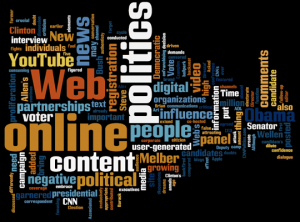 Health care technological advances will enable much higher quality attention to be delivered anywhere, without the professional and the patient needing to be in the same room. E-health can stand for Everywhere-Health-Care instead of the pathetic usage of “electronic.” Structural reform of the health care industry can cause e-health to be provided cheaply and quickly. In past years, the underlying assumption as to health care has been that some minimum is a human right. Perhaps the maximum – all that science can provide – is also a right that humans can claim, especially because infotech can radically reduce the barrier of cost.[Note 14]
Health care technological advances will enable much higher quality attention to be delivered anywhere, without the professional and the patient needing to be in the same room. E-health can stand for Everywhere-Health-Care instead of the pathetic usage of “electronic.” Structural reform of the health care industry can cause e-health to be provided cheaply and quickly. In past years, the underlying assumption as to health care has been that some minimum is a human right. Perhaps the maximum – all that science can provide – is also a right that humans can claim, especially because infotech can radically reduce the barrier of cost.[Note 14]
Distributed computing will transform language learning, reveal how no two children are alike, and attack distance and elitism in education. Inevitably, distributed computing will find itself in the crucible of ethical debate about who should enjoy what benefits and at what cost. A Biden Administration can renew Horace Mann’s legacy of nonsectarian, open, universal education by funding infotech teaching for all.
By sometime in the 2020s goods and people should be primarily carried from place to place by autonomous electric vehicles. Immediately, the Biden Administration should subsidize vehicle miles travelled electrically (and not electric cars themselves). Then light duty trucks, taxis, rental cars, Uber and Lyft drivers and every other shared, heavily used vehicle currently gas powered would be quickly swapped for the electric version.
The promise of subsidies would cause autonomous vehicle development to proceed apace with electric motorization. No vehicle is likely to be used more than an autonomous one – which can go about its business while stopping only to recharge the batteries. If two to five million autonomous electric vehicles were sold in the United States for two or three years, these around-the-clock transportation machines would substitute for as much as half of all gas-powered miles driven. That is a 50% reduction in greenhouse gas emissions from automobiles, the single most egregious of American contributions to global climate catastrophe.
Just as a Tesla is distributed computing on wheels, so technology must be used to slash greenhouse gas emissions very rapidly. Infotech firms are already promising to become carbon neutral within 10 to 15 years. If the whole sector caused its global supply chain to reach that goal, that would be a more important step toward international cooperation that the big problem industries – cement, plastics, and oil and gas itself – could be forced to copy. Distributed computing can permit buildings to turn on lights, adjust heating and air conditioning, consume power only when needed by people and industrial processes.[Note 15] With load balancing refined to milliseconds, wind and solar power can be sold at zero marginal cost to any distribution utility, provided that the government has paid for new transmission lines between scarcely populated windy or sunny spaces and distant conurbations.
This was an example of a “moonshot” that President-elect Obama and Vice President-elect Biden asked their advisers to put in the 2009 stimulus plan, only to be told no on the grounds that the projects would take a long time. The bugaboo of construction time was a major mistake that kept the Obama-Biden Administration from delivering sustained, substantial economic stimulus for several years. Most of the actors then now realize this was a miscalculation.
In the 2021 stimulus plan the Biden Administration must extend to everyone in the country the best versions of the six platforms[Note 16] – clean power, transportation, water and sewage, communications, health and education. Infotech firms should provide much of the functionality of each of them. For example, distributed computing ought to identify and curtail greenhouse gas emissions from every source. Transportation too should be managed by distributed computing in cars and adjacent to roads.
The technical arrangements for delivering these benefits require public-private agreements, not more difficult than the IEEE standard setting but equally sophisticated.
Public money will be more parsimoniously spent in 2021 than in 2020, considering the current amount of public debt. To leverage that money, public funds will need to be put into nonprofits and local governments dedicated to equitable distribution of these improvements in living standards. Public and private investment will have to be joined up to achieve the spending required for the six platforms to be realized everywhere. Each of these platforms uses distributed computing to maximize its benefits. Each platform’s benefits should be distributed to all Americans, either by the firms acting alone or with some government subsidy or requirement.
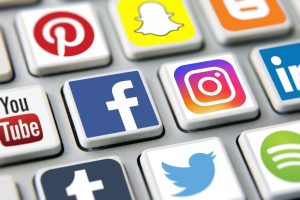 Already the infotech giants dwarf other firms in market capitalization and influence over the culture. They are what the computer, telephone, broadcast, cable, newspaper, advertising and retail industries were 30 years ago – but they are all these and more rolled into the most powerful firms ever seen in the modern economy. Because of the vast range of goods and services distributed computing will produce, these firms will grow even bigger, or be replaced by new companies even more powerful than they now are.
Already the infotech giants dwarf other firms in market capitalization and influence over the culture. They are what the computer, telephone, broadcast, cable, newspaper, advertising and retail industries were 30 years ago – but they are all these and more rolled into the most powerful firms ever seen in the modern economy. Because of the vast range of goods and services distributed computing will produce, these firms will grow even bigger, or be replaced by new companies even more powerful than they now are.
All these winning firms have to recognize that with market power comes ethical responsibility, in two forms. Structurally, an earned monopoly is not illegal but the monopolists have to engage in the unnatural act of tolerating competition. When Intel was one of the most important firms in infotech, at the end of the 1990s, its iconic leader Andy Grove said that if the company did not have the competitor AMD it would have to invent a firm to play that role. It didn’t hurt Microsoft to face the fact that Google beat it on numerous fronts in the early years of this century. These winners can cope with competition. In any event, whether they like it or not, the Biden antitrust division should take the hardest of looks at divestitures and interconnection requirements, as was done with AT&T in the 1970s and 1980s to the benefit of the infotech industry.
Culturally, the social networks specifically and infotech firms generally have to adhere scrupulously to practices honored by all in their polytheist workforces, even if that means their business models have to change. Facebook has to stop monetizing hatred. The firm has broken too many things already. Google has to put in its past the jejune motto “don’t be evil.” It must affirmatively do good. One might ask if that is like asking Exxon-Mobile to stop heating the atmosphere, but I believe infotech’s leaders can come to understand that evil and good are binary: if you don’t want to do the former, you have to do the latter. Binary is, after all, their thing.
Efforts to aid in a testing and tracing of COVID-19 were in the right direction. By and large, however, infotech and its cousin biotech have not yet mitigated, much less quelled the pandemic. The utter failure of government leadership gave these sectors a golden opportunity to show how Americans can act voluntarily to help each other. So far, the chance has not been taken. “Not my responsibility” [Note 17] will not do for America what needs doing.
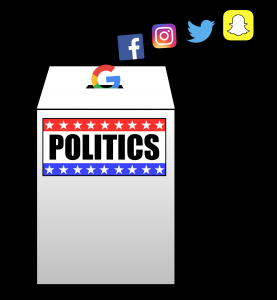 Infotech must make democracy work well. Voters do not deserve all the blame for their misperceptions when the most sophisticated computer scientists dedicate themselves to distorting individual points of view in return for money. However, as I understand it, Google has eschewed microtargeting of voters for political advertising. That practice is an invitation to the dirtiest of dirty campaign tricks. Congress should ban it.[Note 18] All firms should agree to refrain from putting a target on each voter even if the right-leaning Supreme Court continues to strike down reasonable ways to regulate elections.
Infotech must make democracy work well. Voters do not deserve all the blame for their misperceptions when the most sophisticated computer scientists dedicate themselves to distorting individual points of view in return for money. However, as I understand it, Google has eschewed microtargeting of voters for political advertising. That practice is an invitation to the dirtiest of dirty campaign tricks. Congress should ban it.[Note 18] All firms should agree to refrain from putting a target on each voter even if the right-leaning Supreme Court continues to strike down reasonable ways to regulate elections.
Microtargeting may need to be barred also when the advertiser is selling a conspiracy theory or a t-shirt. The country is at risk when Q-Anon fantasies are supported by the president and become themes for candidates for public office. Microtargeting enables people with money to alter the beliefs and opinions, to change the culture, of people on a person by person basis. Such ultimate segmenting is the dream of advertising and the end of common culture.
Nor can individuals adequately protect themselves from the incoming deceptions. People cannot know how thoroughly their understanding can be altered. In my first class in law school a student asked the professor what it would be like to think like a lawyer. The professor said he could not explain it because he no longer remembered what it was like to think another way. What a career in law can do to the synapses Facebook or Google can do in a week.
Artificial intelligence can supplement human capability. Or it can trivialize humans. As with nuclear weapons, limits have to be set. Treaties and other non-government agreements that reach across borders must govern distributed computing. The scale, scope and complexity of infotech in the next decade may invite despair about humanity’s ability to keep the unbottled genie in check. At the very least, however, the United States has to battle globally for its old-school cultural values of liberty, tolerance, and reason against the inevitable use of distributed computing by China and other adversaries for other, heinous ends.
The Biden China strategy needs to start with the belief that Western firms can outcompete Chinese firms. The United States used to have that conviction; isolationism assumes the opposite. To win in global competition, however, the United States government needs a top-quality American flag firm to make communications equipment. The likely candidate is Cisco. It needs a new semiconductor manufacturing firm. It should issue a request for proposal, provide billions of dollars, insist that Apple and Qualcomm provide demand for the supply from this firm, and then award the contractor to the bid winner in a transparent process. This is how the government purchased communications services for many years, and it may lead to Intel winning or a new company or a consortium. But picking a Taiwanese firm in a secret process was a big mistake.
Finally, most infotech value is created at the software layer. Google should be awarded government grants to improve upon the Huawei software stack. Alternatively, another request for proposal should award funds to a firm that would meet this imperative.
Underlying the strategic battle with China must be long term investment in higher education and research facilities that will deliver innovation in the United States for years to come. The scope of investment must cover 5G radio systems, edge and cloud computing, processor architecture, AI and advanced energy systems. To meet the research demand that has to be created, the United States needs immigration law to encourage recruiting technologists from around the world. About a third of science faculty now were born in other countries. That signifies the necessity of going offshore to recruit still more talent.
The bottom line is that any infotech firm needs to achieve global scale. Even big, rich United States cannot provide enough revenue for infotech firms to keep up the capital spending and innovative investment needed for winning in competition.
Conclusion: Winning Again
For the United States to fight a battle of ideas is not new. The American strategy of the 1990s rested not only on American technological breakthroughs and successful firms, but also on values and policies. In January 1994, the policy contours of the information revolution were outlined by Vice President Al Gore in a speech at Royce Hall at the University of California, Los Angeles.
The United States offered as core principles globalization (also known as universalization), interconnection, freedom, and multi-stakeholder governance. Most companies, governments, and users supported the idea that the essential technologies should be freely distributed across national borders and across divides of class, gender, language, and race. The intended result was rapid learning, economic growth without resource or labor exploitation, and the creation of a sense of participation in planetary problem-solving. These outcomes in fact were witnessed to a large degree everywhere in the world for the ensuing quarter-century. The beliefs in information technology and the values to which it should be put composed a successful culture.
That strong culture created trustworthy institutions. They included new companies and old agencies, new forums, and old international organizations. The web of these institutions enabled information technology to record historical achievements. These included the promotion of democracy, the uplift of billions from poverty, and the advancement of knowledge. The United States should propose an international agreement on democracy, starting with domestic legislation assuring that the right to vote can be exercised freely. Distributed computing techniques permit reliable, safe voting and counting of votes. The era of disputed or spurious votes ought to be ended.
The renewal of the American culture and assertion of that culture as an important contribution to humanity is the central mission of a President Biden. He may not cement a truce in culture wars, but he can win the greater part of the country to the side of tolerance, reason, faith, and a commitment to good works. Why not ask for a Catholic president to minister to the laity? A modestly evangelical Administration will have to bridge the gap between religion and science, and catch the wave of technology trends. It will need to renegotiate the terms of its relationship with the infotech sector, but the prospect of success is glittering. Black Lives Matter, the movement, showed that the cycle from information to understanding to action spun very quickly. Assembly in public spaces led to policy initiatives, iconoclasm, primary victories, and a shift in political opinion.
In the Biden Reform the movement can unite the spirit of 1) ad fontes, meaning back to the original sources of the American adventure, and 2) an optimistic, infotech-driven, approach to the most difficult collective challenges. Humanist ethics and distributed computing may be woven together in a common culture supporting evangelical Christians and agnostic engineers. Why not? The goal after all is to make this real: out of many, one.
—-Notes —-
1. A blunder was to succumb to the blandishing advocacy of special interests in Silicon Valley and sue the Seattle firm on antitrust grounds. Nothing much came of the litigation except that its scar tissue marred the relationship of the defendant Microsoft with good government purposes for many years. The author tried but failed to facilitate an early settlement of the case in 1998.
2. The Europeans championed the digital airwaves standard called GSM; Japan had another. The United States chose to let its competing firms pick the standard. Because America had created more robust competition than the other countries, its firms battled with each other on the standards issue, and the marketplace decided in favor of what ultimately was an American synthesis of competing techniques.
3. The World Trade Organization was a means to advance American interests. The Trump Administration’s reversal of this approach, and Republican support for that reversal, has been a terrible blunder.
4. It can be argued that the power to decide who lives or dies is the ultimate expression of sovereignty. https://muse.jhu.edu/article/39984
5. China, of course, was the outlier. Instead of letting American infotech in, it kept the United States companies out, but imitated their strategy of global infotech domination. Inevitably, Jack Ma, the founder of one of the most successful Chinese infotech companies named his firm Ali Baba, after asking for a reaction from the waitress in the San Francisco coffee shop where he had this insight in 1999. “Open Sesame,” she said brightly, thus passing the American infotech business strategy to Ma.
6. Among the mistakes of 2009 was the failure to borrow at the scale made evidently possible during the massive spending in the pandemiconomy of 2020.
7. https://www.amazon.com/Chinas-Great-Economic-Transformation-Brandt/dp/0521885574/ref=sr_1_1?dchild=1&keywords=China%27s+Great+Transformation%2C+Cambridge%2C+UK%3A+Cambridge+University+Press%2C&qid=1594481827&sr=8-1
8. The United States led in creating unlicensed spectrum suitable for Wi-Fi. This helped American firms defeat a competing European alternative called HiperLAN.
9. https://www.icann.org/resources/pages/welcome-2012-02-25-en
10. CEO Mark Zuckerberg defeated Rupert Murdoch’s My Space to become the dominant platform for user-generated content. But Zuckerberg copied Murdoch’s business culture. For the fun and profit in it, Murdoch used newspapers and television to foster lies and hatred. Zuckerberg did the same with the platform that the Internet made possible for him. Both exercised dictatorial control of their firms and became close allies of the Republican Party.
11. Not just democracy but also the rule of law has been a target.
12. Instead, existing government cannot successfully deliver unemployment compensation, a job that an app could complete in a few days. https://www.washingtonpost.com/business/2020/07/13/unemployment-payment-delays/
13. The boundary will blur. AI games mix the two domains willy-nilly. https://www.reddit.com/r/slatestarcodex/comments/hrx2id/a_collection_of_amazing_things_gpt3_has_done/fy7i7im/
14. Test and trace, the policy not chosen by the Trump Administration in 2020 as a response to COVID-19, is an infotech strategy already capable of implementation.
15. Distributed computing, that amalgam of IOT, 5G, and AI, will permit extremely accurate, localized weather forecasts, which in turn have substantial economic and entertainment value. By contrast, today forecasts are dependent on-air travel, something that the shutdowns of the pandemic have taught can be minimized. https://agupubs.onlinelibrary.wiley.com/doi/abs/10.1029/2020GL088613
16. A platform is an organizational or technical method of combining various assets and skills so that the whole is greater than the sum of its parts. In political terms, the federalism of the United States is meant to be a platform. https://www.gwern.net/Holy-wars
17. This is what one of the most informed commentators told me was the standard for this industry. Not good enough then; definitely not good enough going forward.
18. This is a popular view. https://news.gallup.com/opinion/gallup/286490/oppose-micro-targeting-online-political-ads.aspx

I assume you intended to refer to “St. Peter’s in Rome” in your opening. While it completed after the initial bouts of the Reformation, the sale of indulgences to finance it – as well as the Medici Pope’s lifestyle – sparked Luther’s conflict. Metonymically, in a sense, the building makes your point since the real response to the Reformation, the Council of Trent, put in motion cultural reorganizations on the scale your memo envisions.